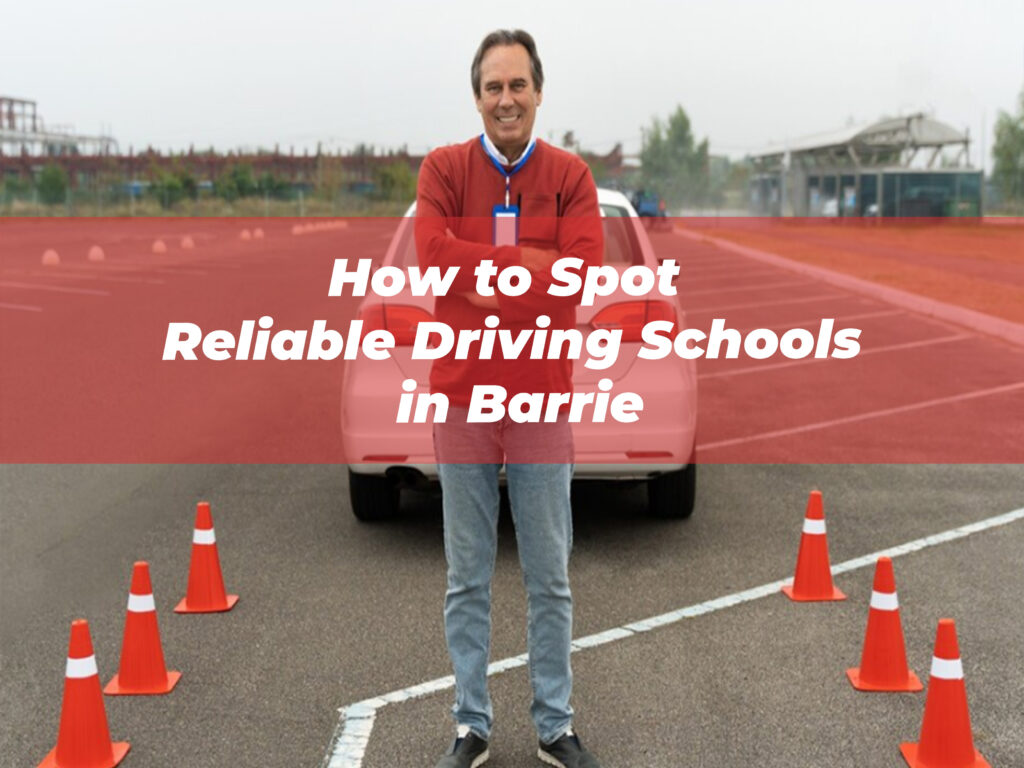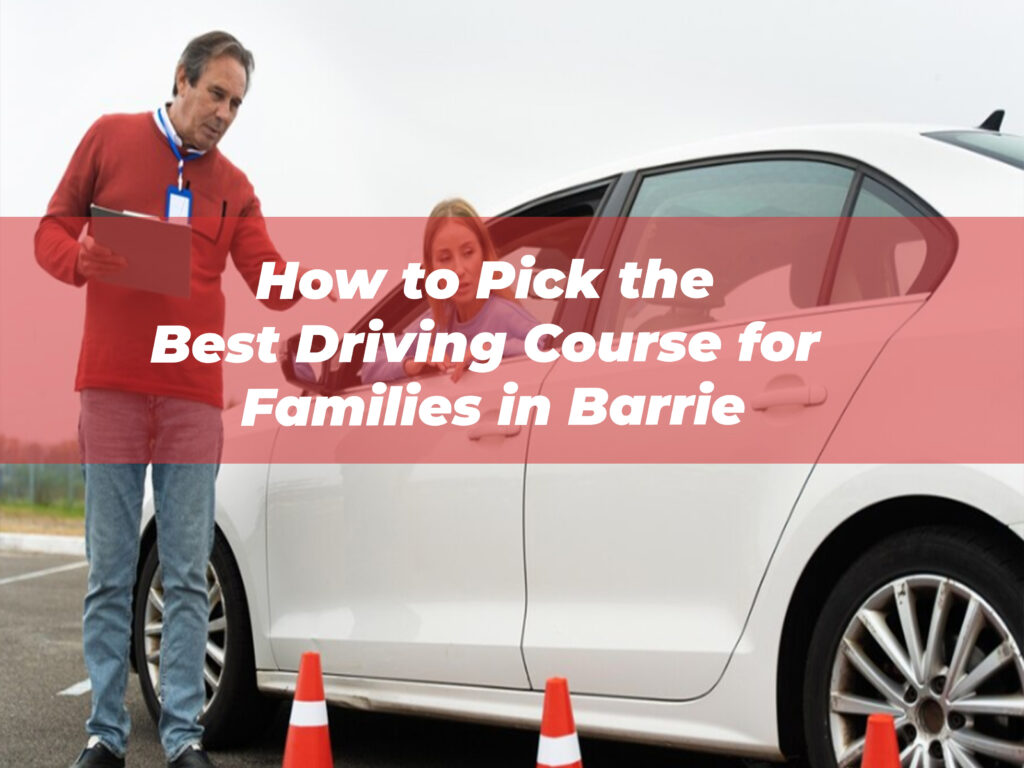Barrie is a vibrant city that combines the charm of a tight-knit community with the challenges of growing urbanization. Whether you’re cruising along the beautiful waterfront or navigating the busy Highway 400, safe driving should always be your top priority. The Driving Habits mix of residential areas, rural routes, and bustling highways requires drivers to stay vigilant and adaptable. Not to mention, the unpredictable weather conditions in Ontario can make driving even more challenging.
Developing good driving habits isn’t just about avoiding fines or ensuring smooth commutes; it’s about protecting yourself, your passengers, and others on the road. This guide will walk you through the top driving habits that will help keep you safe while driving in Barrie.
Defensive Driving Is Key to Staying Safe
Defensive driving is one of the most important habits to develop. It’s all about being proactive and prepared for the unexpected. While driving in Barrie, a Driving Habits mindset can be the difference between avoiding a collision and being involved in one.
1. Always Stay Aware of Your Surroundings
It’s crucial to scan your environment constantly. Look far ahead down the road, check your mirrors regularly, and keep an eye on nearby vehicles. Remember, distractions can come from anywhere, whether it’s a speeding car, an inattentive pedestrian, or an unexpected obstacle.
Quick Tips for Staying Alert:
- Check your mirrors every 5–8 seconds.
- Look two vehicles ahead to prepare for sudden Driving Habits.
- Be mindful of blind spots, especially when changing lanes or merging.
2. Maintain a Safe Following Distance
Barrie’s traffic can get congested, especially Driving Habits rush hours and on Highway 400. Tailgating is a common problem, and it significantly increases the risks of rear-end collisions. A general rule of thumb is to maintain a three-second gap between your car and the one ahead. This distance should be increased in bad weather conditions or when driving at higher speeds.
3. Anticipate Mistakes from Other Drivers
While you may follow all the rules, not everyone does. Defensive Driving Habits involves expecting the unexpected and being ready to adapt. Watch for sudden lane changes, improper signaling, or distracted drivers. By staying cautious, you can avoid accidents caused by someone else’s mistakes.
For Example:
- If a car is swerving or braking erratically, assume the driver might be distracted and keep your distance.
- At intersections, even with the right of way, always double-check for vehicles that may not stop.
Adapting to Barrie’s Weather Conditions
Ontario’s weather can be wildly unpredictable, and Driving Habits can pose a significant challenge for drivers. From icy roads to heavy snowfall, winter driving accidents are far too common. Developing specific driving habits to handle different weather conditions can make your commutes much safer.
1. Equip Your Car for Winter Driving
Before discussing habits, it’s important to make sure your car is ready for winter. Install winter tires for better grip on snow and ice, and keep your wiper fluid topped up with a winter-grade Driving Habits. Your vehicle’s preparedness is half the battle.
2. Slow Down on Icy or Snowy Roads
Speed limits are established for ideal road Driving Habits, not slippery surfaces. On snowy or icy roads, you should reduce your speed significantly. This will increase your reaction time if you encounter hazards, such as a car skidding in front of you or a sudden snowdrift.
Quick Reminder:
Accelerate slowly and brake gently in winter conditions to avoid skidding.
3. Look Out for Black Ice
Black ice is invisible and incredibly dangerous. It often forms on bridges, shaded areas, and intersections. Always drive cautiously in these areas during winter, and avoid sudden steering or Driving Habits.
4. Maintain Control in a Skid
If your car does start to skid, don’t panic. Here’s how you regain control:
- Take your foot off the accelerator.
- Steer gently in the direction you want the car to go.
- Do NOT slam the brakes, as this can worsen the skid.
By practicing skid recovery techniques ahead of time in a safe environment, such as a driving simulator, you’ll feel more confident if this situation arises.
Navigating Barrie’s Local Traffic Patterns
Barrie’s roads present unique challenges due to its mix of urban, suburban, and rural traffic patterns. Whether you’re downtown or on the outskirts, staying informed and alert can help you avoid accidents.
1. Be Mindful of Busy Intersections
Barrie is home to several high-traffic Driving Habits, such as Bayfield Street and Dunlop Street, where accidents are more likely to occur. Always approach intersections cautiously and watch for vehicles running red lights or failing to yield.
Key Intersection Tips:
<ul”>
- Wait a moment before proceeding when a light turns green to ensure no one is trying to rush through the yellow/red light.
- Always stop for pedestrians, even if you’re in a rush.
2. Practice Caution on Highway 400
The Highway 400 corridor is a vital roadway for Barrie residents commuting to Toronto and other parts of Ontario. While convenient, it can be hectic, especially during rush hours or long weekends when tourists head to cottage country.
Safe Highway Driving Habits:
- Avoid sudden lane changes and use your signals well in advance.
- Travel in the right lane unless you’re overtaking slower traffic.
- Keep an eye on large trucks and leave extra Driving Habits around them, as they have larger blind spots and longer stopping distances.
3. Watch for Cyclists and Pedestrians
With its beautiful waterfront and growing infrastructure, Barrie attracts plenty of pedestrians and cyclists, especially during warmer months. Be extra vigilant near crosswalks, parks, and residential areas where people on foot or bikes may enter the roadway suddenly.

Tips for Avoiding Common Driving Accidents
Certain types of accidents occur more frequently than others, and many of them are preventable through smart habits. Below are some of the most common types of accidents in Barrie and how to avoid them:
1. Rear-End Collisions
These are often caused by tailgating or distractions. Always maintain a safe following distance and stay focused on the road ahead.
2. Intersection Accidents
Failing to stop on time, misjudging the speed of oncoming traffic during turns, or running red lights are common culprits. Approach intersections with caution, make controlled stops, and be patient when waiting to turn.
3. Single-Vehicle Accidents
These include accidents with stationary objects like poles, fences, or trees, and they often occur due to distracted or impaired driving. Always keep your focus on the task at hand, and pull over if you’re feeling drowsy or distracted.
4. Parking Lot Fender Benders
Tight spaces and frequent maneuvering make parking lots prime spots for minor accidents. Drive slowly, watch for pedestrians, and always check your blind spots when reversing.
Avoiding Distractions While Driving
One of the biggest threats to road safety is distracted Driving Habits. Whether it’s texting, eating, adjusting the GPS, or chatting with passengers, even brief distractions can lead to devastating consequences.
1. Put Your Phone Away
The number one cause of distracted driving is cell phone use. Even with hands-free options, texts or calls can take your attention off the road. Make it a habit to keep your phone out of sight while driving.
2. Limit Other Distractions
You might think you’re multitasking when you eat, tune the radio, or rummage through your bag while driving, but in reality, these actions divide your focus and reduce your response time. Save these activities for when you’re parked.
Build Safe Driving Habits for Life in Barrie
Driving safely in Barrie requires a combination of skill, patience, and preparation. By adopting defensive driving techniques, staying mindful of local traffic conditions, and adapting to the city’s unpredictable weather, you’ll greatly reduce your risk of accidents.
Remember, good driving habits are not just a one-time effort. They require consistent practice and a commitment to prioritizing safety every time you get behind the wheel. With the tips outlined above, you’ll be equipped to handle Barri’s roads confidently and ensure the safety of everyone around you.









